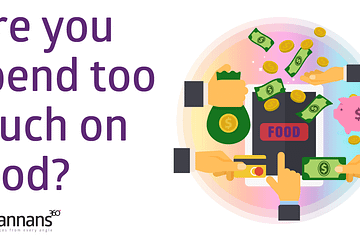Picking your perfect match
Choosing a super fund is a bit like dating. Pick the right fund and you’ll be set for a long, happy and comfortable life when you retire. Set your sights on the wrong one and you’re in for a world of pain. Here’s how to choose the best super fund for you.
1. Check if you can choose your fund
2. How to compare super funds
3. What happens when you don’t choose a fund
4. How to change super funds
Check if you can choose your fund
Most people can choose the fund for their employer’s super contributions. However, some people who are covered by industrial agreements and members of defined benefit funds don’t have this choice.
To find out if you can choose a fund, check with your employer or see the Australian Taxation Office’s (ATO’s) information on choosing a super fund.
If you do have a choice, your employer will give you a ‘standard choice form’ when you start work. The form sets out your options for choosing a super fund. You can select your own or go with your employer’s fund.
Provide your tax file number when you join a super fund. This ensures you’re taxed at the special low rate and your super account is less likely to get lost.
How to compare super funds
There are a few key things to consider when comparing super funds. Spend some time looking at your choices.
| Things to compare | What to look out for |
|---|---|
| Fees | The lower the better |
| Investment Options | Make sure there are options that suit your needs and comfort with risk |
| Extra Benefits | Your employer may pay more than 9.5% for certain super finds or if you make extra contributions yourself |
| Performance | Pick a fund that has performed well over the last 5 years – do not chase last year’s best performer |
| Insurance | See what cover is available and what it will cost |
| Service | Call the fund or browse their website to see what other services they offer |
Where to find information on different super funds
You should be able to find information on fees, investment options, benefits and performance in the following places:
– Product disclosure statement (PDS)
– Super fund’s website
– By calling the super fund
Make sure you are comparing apples with apples by paying attention to factors like how often the quoted fees will be charged on your account and the period the investment returns relate to.
For example, a 5-year average return for the period ending 30 June may be different from a 5-year average return for the period ending 30 September.
When looking at investment returns, also make sure your comparison is based on the investment option you want to invest in. There’s no point comparing balanced investment options if you will actually choose a conservative or growth option.
You may find super comparison websites helpful in gathering some of this information.
What happens when you don’t choose a fund
If you don’t choose a super fund when you start a new job, your employer will pay contributions for you into a ‘default’ fund that they choose or as identified in an industrial award. If you don’t chose a super fund, your employer must pay your super into a MySuper account. MySuper accounts have lower fees and simple features so you don’t pay for services you don’t need. My Super accounts are available now. See MySuper.
Compare the default fund with at least two other funds, such as an industry fund and a retail fund including a MySuper account.
You can choose a fund at any time, but you cannot make your employer change your fund more than once a year.
If you have several super fund accounts, you can transfer the money to your new fund. It saves time and money in the long run to keep your super in as few accounts as possible. However, check if you will lose important insurance benefits by leaving a fund. See types of super funds.
How to change super funds
You might want to change super funds to:
– Consolidate your super into one account
– Reduce fees
– Invest in a fund with better services and features
– Get out of a fund that has performed poorly over a 5-year period compared to similar funds
– Leave a corporate fund after resigning from your job (a corporate fund generally only accepts contributions from the employer)
– You can change super funds by filling out a rollover form and sending it to your new fund or by logging on to your MyGov account. Visit the ATO’s keeping track of super webpage for more information.
If using the rollover form you need to provide proof of identity to transfer to another fund; this protects your super from being unlawfully transferred by someone else.
Don’t rush to change super funds if:
– Your fund performed badly in a single year – stick to judging performance over 5 years or more
– You’re chasing last year’s top performing fund – it may not perform as well in coming years
Before you change super funds
If you’re thinking about transferring your super, check:
– If changing funds will affect how much your employer contributes
– The impact on your retirement benefit if you’re in a defined benefit fund
– That you’ve notified your employer to make future contributions to your new fund
– That you’re not losing insurance benefits you want to keep
– The exit fees of your old fund
– Whether your new fund charges contribution fees
Still Unsure? We’re happy to help
If you are still unsure on which super fund to choose, talk to one of our Financial Advisers.
Call us on (07)3806 4484 or email at gday@hannans360.com.au






